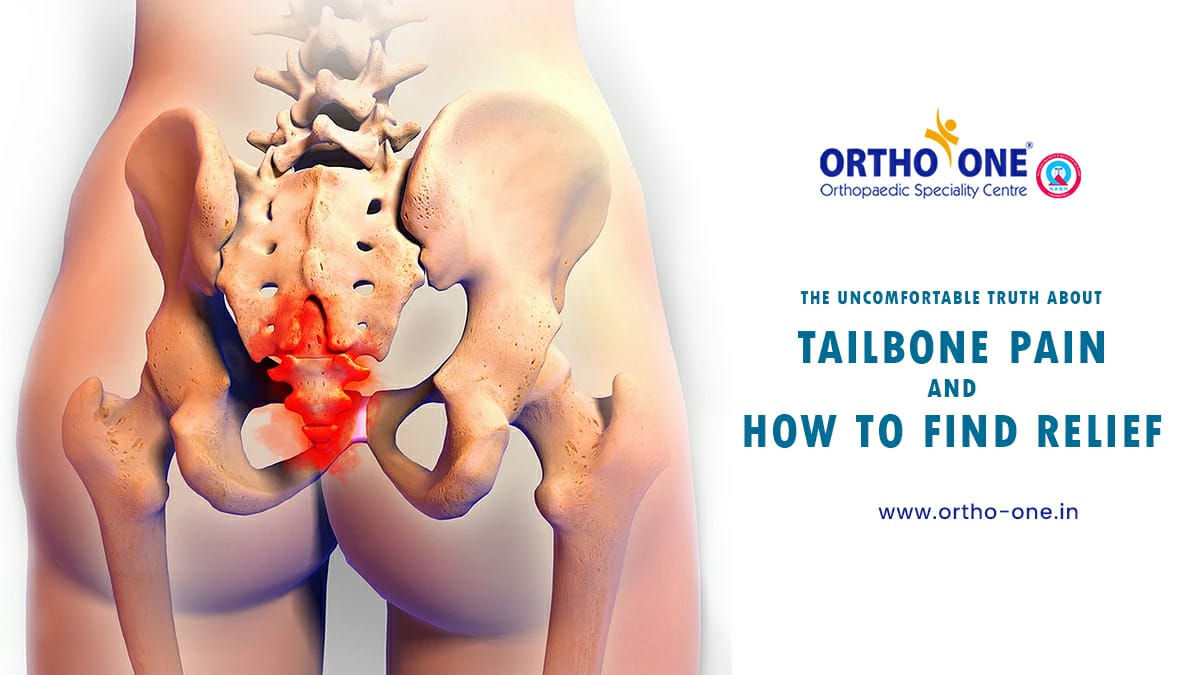Dr. R. SreeRamaligam, spine surgeon at Ortho-One in Coimbatore, discusses tailbone pain, its causes, and treatment options. Tailbone pain is commonly experienced by people who participate in activities that require prolonged sitting, such as bike rides or long-distance travel. Trauma due to adventure sports can also lead to tailbone pain. Such activities can put pressure on the tailbone, causing changes that can lead to tailbone pain. This is known as coccydynia or coccygeal pain in medical terms.
“The tailbone is the backbone’s final and lowest segment, and it can move independently. As a result, there are numerous ways for the tailbone to get damaged or change position causing pain,” Dr. R. SreeRamalingam says. Some people experience this change as a bone subluxation, in which the tailbone moves up. In some cases, the tailbone can become dislocated and completely removed from its original location. It could be a simple sprain in others, or it could become lodged in the upper bone of the spinal cord. All of these can result in tailbone pain or pain in the area where the tailbone touches the surface while sitting.
“The easiest way to deal with tailbone pain is to sit in such a way that there is no pressure on the tailbone. This entails leaning forward while sitting down by sitting on a donut-shaped pillow,” recommends Dr. R. SreeRamalingam.
In the early stages, tailbone pain has a good chance of healing on its own if precautions are taken to avoid putting pressure on the tailbone for at least 2-3 weeks. Painkillers can be taken, if necessary, during this self-care phase. Dr. R. Sreeramalingam, however, advises against using over-the-counter ointments. This is due to the fact that most analgesic ointments contain ingredients that cause a burning sensation. As a result, applying such ointments in the tailbone area, which is very close to the anal region, can cause burning in the sensitive anus. Therefore he recommends only adequate rest and painkillers and not analgesic creams or ointments.
“Even After adequate resting for 3 weeks if the pain refuses to subside, then it is time to visit a doctor,” says Dr. R. SreeRamalingam. The doctor will use special X-rays called Coccyx view to view the position of the tailbone and to check if it is aligned correctly or if it has been pushed to the top or bottom. After finding out the changes, if any, to the tailbone, treatment must be designed accordingly.
Most people find that exercises and ointments designed specifically for tailbone pain work wonders. However, if these measures do not relieve the tailbone pain, Dr. R. SreeRamalingam recommends a coccyx block injection. This is administered in the joint of the tailbone after placing the patient in a facedown position. Following the injection, the tailbone is repositioned. This gives immediate pain relief, allowing the patient to sit on hard surfaces and carry on with their day-to-day activities.
“There are no surgical interventions that can be used to treat the tailbone pain. The coccyx block acts as a final and very effective method to treat tailbone pain,” assures Dr. R. SreeRamalingam.





